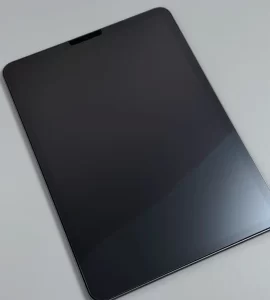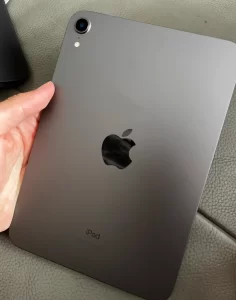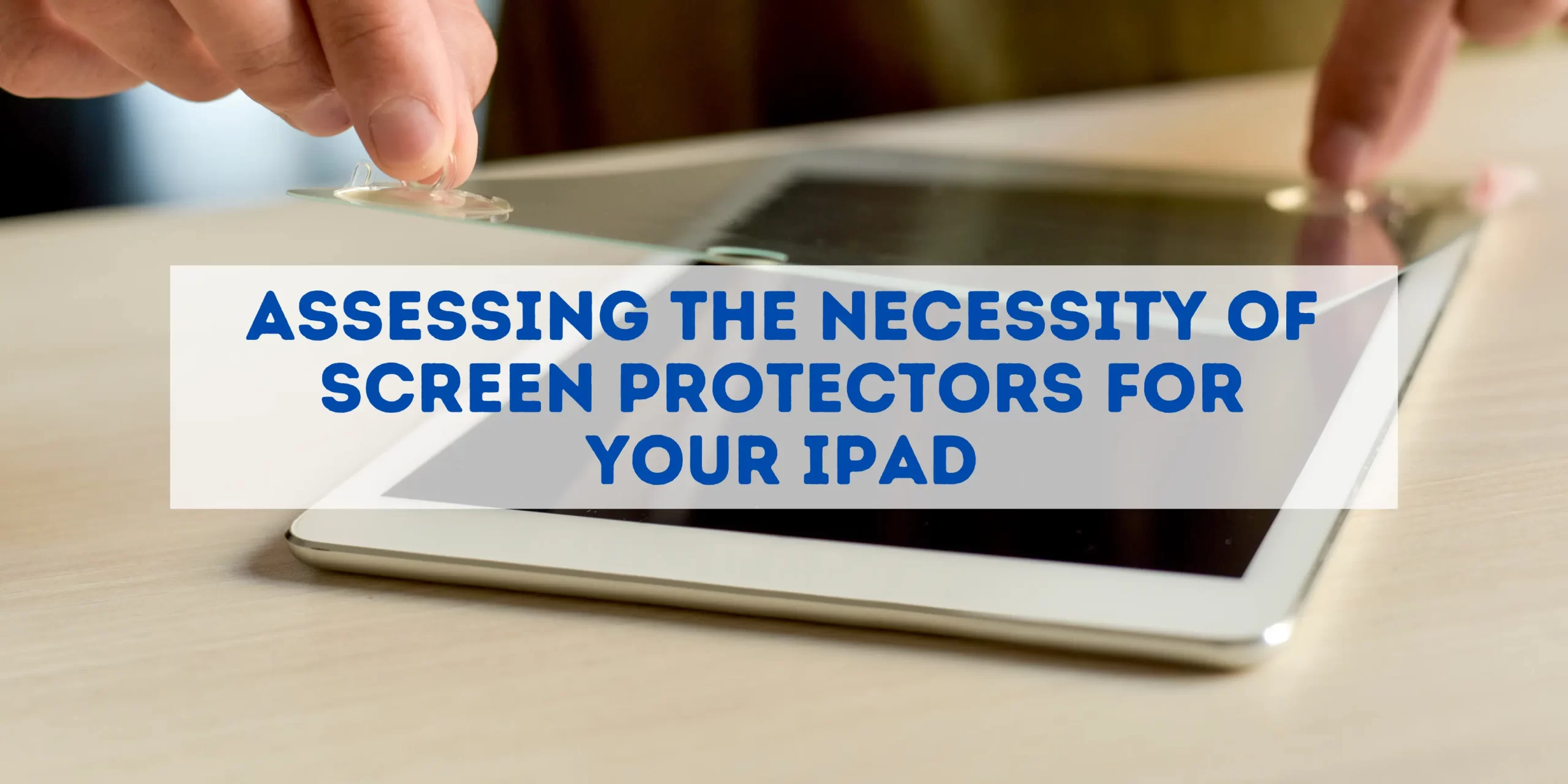In today’s era of rapid technological advancement, the iPad has become an indispensable device in the daily lives and work of countless people. With each new generation of products, Apple Inc. continues to innovate and enhance its screen technology, evolving from the early basic touch screens to the current high-resolution, anti-reflective displays equipped with True Tone technology, making the iPad’s screen one of its most acclaimed features. However, with the advancement of these technologies, a question arises: in the face of such refined and advanced screens, do we still need screen protectors to safeguard our devices?
There is no one-size-fits-all answer to this question. The need for a screen protector depends on various factors, including personal usage habits, how the device is carried, and individual preferences for screen protection. Although the iPad’s screen is meticulously designed with a certain degree of scratch resistance, extra protection measures are still worth considering under specific circumstances. In the following content, we will delve into the necessity of screen protectors and how to make a wise choice based on your specific needs.
Table of Contents
ToggleApple’s Official Stance on Screen Protectors
Apple’s Position on Screen Protectors

Apple’s stance on the use of screen protectors for iPads is nuanced and focuses on the balance between design and user needs:
- Company’s Official Recommendations: Historically, Apple has not explicitly recommended the use of screen protectors. Their devices, including iPads, are designed with durable glass screens intended to withstand everyday use.
- Design Philosophy: Apple’s design philosophy emphasizes sleek, minimalist aesthetics and user experience. This approach suggests a preference for using the device as designed, without additional accessories like screen protectors.
Balancing Design and User Requirements
Apple’s product design often reflects a balance between elegant design and practical user needs:
- Durability vs. User Peace of Mind: While Apple designs its screens to be durable, users might opt for screen protectors for added peace of mind, especially in scenarios involving heavy usage or higher risk of damage.
- Product Experience: Apple tends to focus on delivering an optimal user experience with its products. Adding a screen protector might alter the feel and responsiveness of the screen, which could affect the user experience as intended by Apple.
Apple’s approach to screen protectors is guided by their design principles and the inherent durability of their screens. However, the decision to use a screen protector rests with the user, balancing the desire to maintain the device’s intended aesthetic with the practicality of everyday use and protection.
Scratch Resistance of iPad Screens
Composition and Durability of iPad Screens
The iPad’s screen is designed with materials aimed at balancing durability and visual quality:
- Material Used: Most iPad models feature a glass screen made with a special process to enhance its strength and durability. This includes the use of aluminosilicate glass, which is known for its scratch resistance.
- Oleophobic Coating: iPads are equipped with an oleophobic (oil-resistant) coating that helps reduce fingerprints and smudges, contributing to the overall durability of the screen.
- Resistance to Everyday Wear: While the iPad’s screen is designed to withstand regular use, it’s not completely impervious to all forms of damage. It can resist minor scratches that may occur from daily activities, like using a stylus or regular cleaning.
The iPad’s screen, made with high-strength materials and protective coatings, offers a significant level of scratch resistance, suitable for typical daily usage. However, it’s important to note that while resistant, the screen is not scratch-proof, and its durability can be influenced by the type and intensity of use.
Does the iPad Need Screen Protectors?
Personal Preferences and Usage Dictate the Need
The necessity of a screen protector for an iPad largely depends on personal preference and how the device is used. Several factors should be considered:
- Usage Environment: For users who frequently use their iPad in potentially hazardous environments or situations where the screen might be prone to scratches and impacts, a screen protector can offer an added layer of security.
- Touch Sensitivity and Clarity: Some users may find that screen protectors affect the touch sensitivity or clarity of the iPad’s display. It’s important to choose a protector that maintains the screen’s original responsiveness and visibility.
- Screen Durability: While iPad screens are made of robust and scratch-resistant glass, they are not immune to all types of damage. Users should assess their typical usage patterns to determine the likelihood of screen damage.
- Aesthetic Preferences: Users who prefer the original feel and look of the iPad might choose to forego a screen protector to preserve the device’s design integrity as intended by Apple.
- Cost of Repair vs. Protection: Consider the cost of repairing a damaged iPad screen compared to the cost of a screen protector. For many, the small investment in a protector is worthwhile to avoid potentially higher repair costs.
Deciding whether to use a screen protector on an iPad should be based on a careful consideration of your usage habits, the environment in which the device is used, and your personal preferences regarding device protection and aesthetics.
Impact of Screen Protectors on iPad User Experience

Effects on Touch Sensitivity, Display, and Apple Pencil Usage
The use of a screen protector on an iPad can influence several aspects of the device’s functionality and user experience:
- Touch Sensitivity:
- Some screen protectors, especially thicker ones, can potentially affect the touch sensitivity of the iPad screen. Users might experience a slight delay or need to apply more pressure for touch inputs.
- High-quality protectors are designed to maintain the original touch experience, but it’s crucial to choose the right type.
- Display Clarity and Quality:
- Screen protectors can alter the visual experience of the iPad. Matte protectors might reduce glare but can also add a grainy look to the display.
- Clear screen protectors aim to preserve the original screen clarity, though they may be more prone to fingerprints and smudges.
- Apple Pencil Interaction:
- The use of a screen protector can impact the Apple Pencil’s performance, particularly in terms of drawing precision and responsiveness.
- Some protectors are specifically designed to be compatible with the Apple Pencil, offering a paper-like texture that enhances the drawing experience.
When selecting a screen protector for an iPad, it’s important to consider how it might affect touch sensitivity, display clarity, and compatibility with accessories like the Apple Pencil. Opting for high-quality protectors that are designed to complement the iPad’s features can help minimize any negative impact on the user experience.
Cost-Benefit Analysis of Screen Protectors for iPad
Comparing the Costs of Screen Protectors vs. Screen Repairs
When deciding whether to use a screen protector for an iPad, it’s important to weigh the cost of the protector against the potential cost of screen repair:
- Cost of Screen Protectors:
- The price of screen protectors varies widely based on type and quality. Basic plastic protectors can be relatively inexpensive, while high-quality tempered glass or specialized protectors may cost more.
- Considering the lifespan of a screen protector, the investment is generally minimal compared to the cost of an iPad.
- Cost of iPad Screen Repairs:
- Repairing an iPad’s screen can be costly, especially if the device is out of warranty or not covered by AppleCare+.
- The repair cost often depends on the iPad model and the extent of the damage. In some cases, the price of repair can be a significant portion of the cost of a new iPad.
A screen protector can be a cost-effective investment to potentially save on more expensive screen repairs in the future. The decision to use one should balance the relatively low cost of the protector against the higher cost and inconvenience of repairing a damaged iPad screen.
Types of iPad Screen Protectors and Top Picks
Various Screen Protector Options
Choosing the right screen protector for an iPad involves understanding the different types available on the market:
- PET Film Protectors: Lightweight and thin, PET film protectors offer basic scratch resistance but may lack durability.
- Tempered Glass Protectors: These provide a high level of protection against scratches and impacts, mimicking the feel of the actual iPad screen.
- Anti-Blue Light Protectors: Designed to reduce eye strain by blocking blue light emissions, suitable for users who spend long hours on their device.
Conclusion
In conclusion, while the decision to use a screen protector on an iPad largely depends on individual preference and usage, it’s also worth considering the long-term preservation of your device. A screen protector can be a small investment in maintaining your iPad’s resale value and keeping it in pristine condition. Ultimately, whether for peace of mind, practical protection, or maintaining the device’s aesthetics, the choice to use a screen protector should align with your personal needs and how you value your iPad in your daily life.
You may also like: Does Apple Offer Complimentary Charger Replacements?

